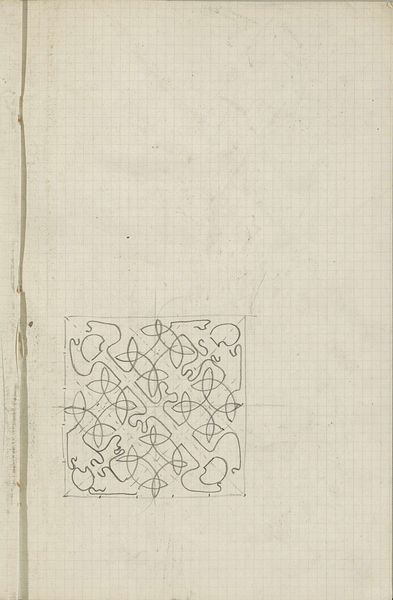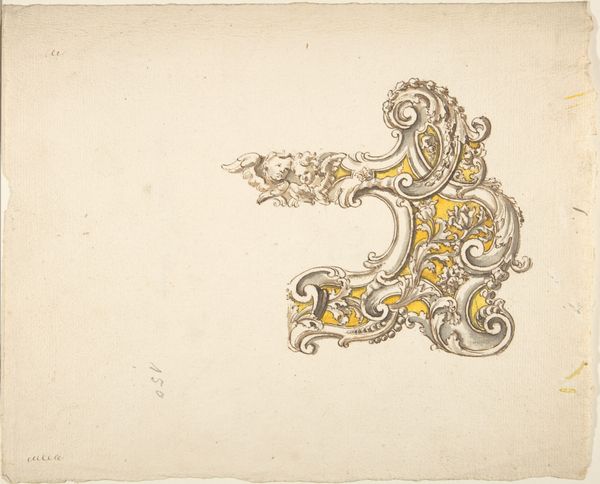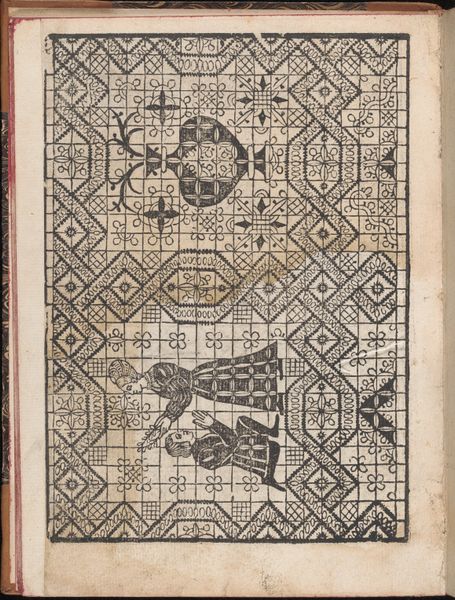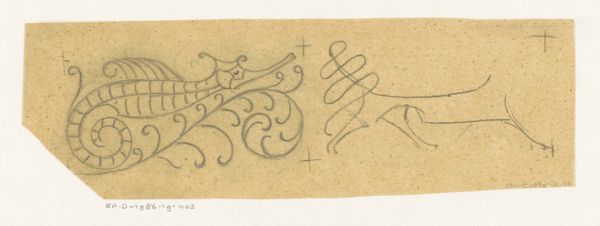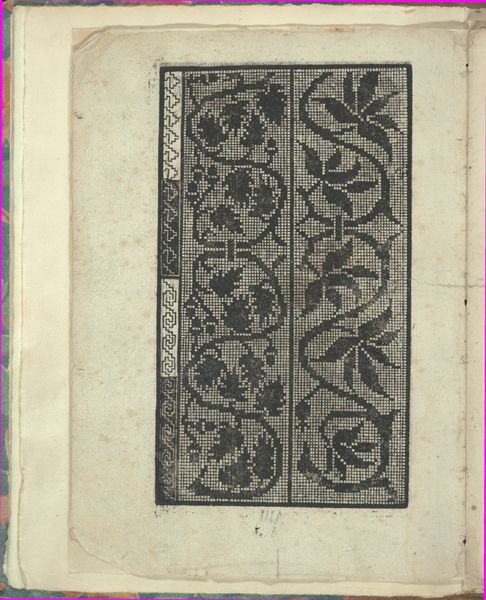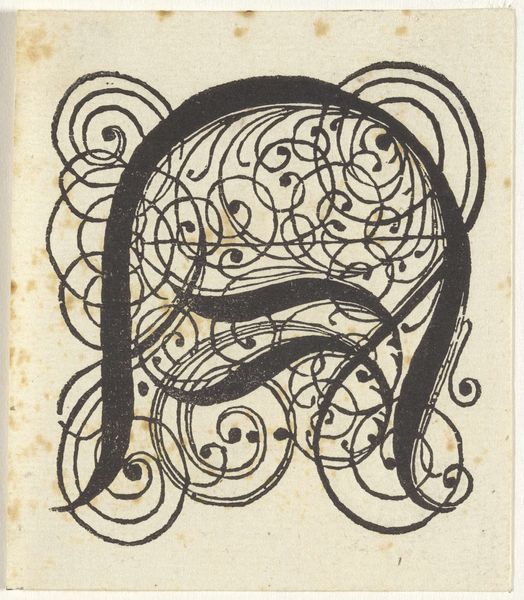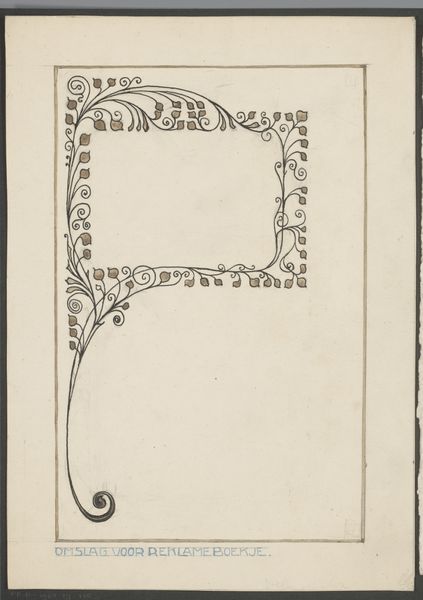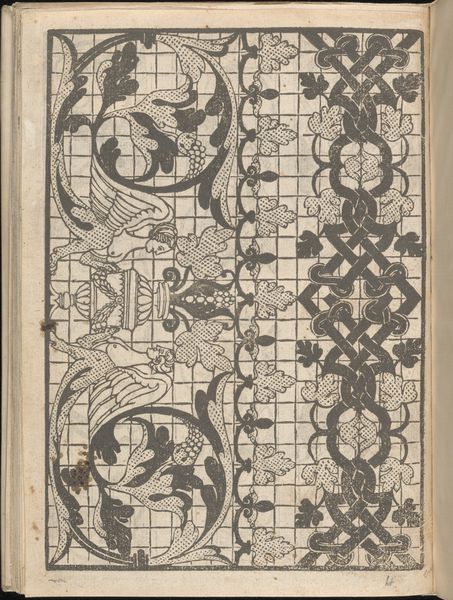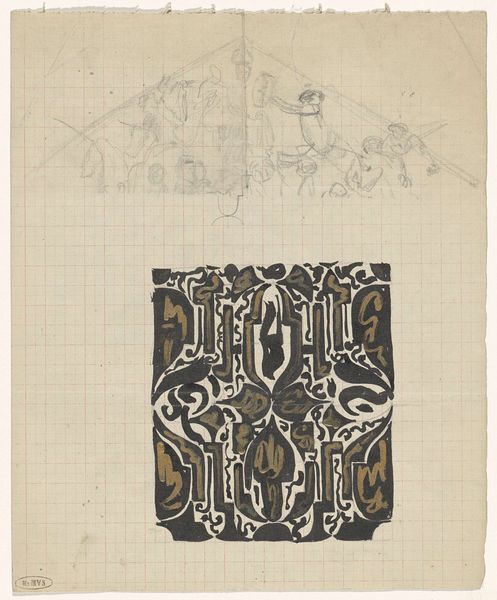
drawing, paper, ink
#
drawing
#
art-nouveau
#
paper
#
form
#
ink
#
geometric
#
abstraction
#
line
#
decorative-art
Dimensions: height 225 mm, width 213 mm
Copyright: Rijks Museum: Open Domain
Curator: Welcome! We're standing before Carel Adolph Lion Cachet's "Decoratief ontwerp," created sometime between 1874 and 1945. It’s currently held here at the Rijksmuseum. Editor: My first thought is "restrained energy." It’s a fascinating contrast; the lines are so dynamic, yet the color palette is surprisingly muted. Curator: Absolutely. And that tension speaks to the essence of Art Nouveau. Notice the interplay of geometric and organic shapes? These patterns suggest order and a clear departure from classical representations, yet still attempt to emulate the natural world. The maze pattern may evoke the ancient world but through the filter of Dutch aesthetic ideals. Editor: True. It’s fascinating to see it on paper with such obvious grid lines. It reminds us that every so-called “decorative” choice, every elegant curve, has its origins in labor. You have the material of the paper itself, a readily accessible item, and then ink applied, perhaps repeatedly. Curator: That's very astute. It leads me to consider the emotional impact of the medium— the immediacy and vulnerability of ink and paper as compared to a monumental sculpture, for example. Cachet's intention here is so interesting to decode when considered in the context of a larger Arts and Crafts movement— one that reclaims utility and craftsmanship from mechanical production. Editor: Indeed! We can't forget the function this piece fulfills: an unseen prototype with intent, to mass-produce similar forms. We can almost follow the lines and envision the eventual multiplication of his idea. I see this design eventually manifest as wallpaper or tile. Curator: And the symbols then embedded into everyday life, reflecting cultural values of industry, progress, nature, and the machine. The imagery conveys memory as an evolving story with its roots in tradition. Editor: Well, on that note, considering the piece's function and artistry, I have a renewed appreciation for what this piece suggests and offers as a fragment of creative labor. Curator: For me, Cachet's design speaks to how symbols, through form, continue to resonate. I look at this design with an open mind, understanding what these patterns meant in a specific time. What stories will these same patterns tell to future eyes, I wonder?
Comments
No comments
Be the first to comment and join the conversation on the ultimate creative platform.

